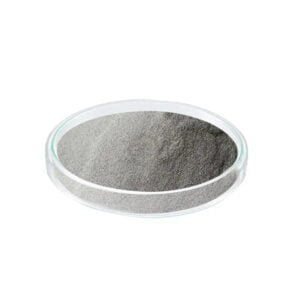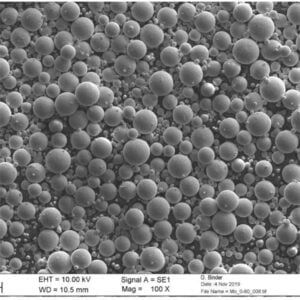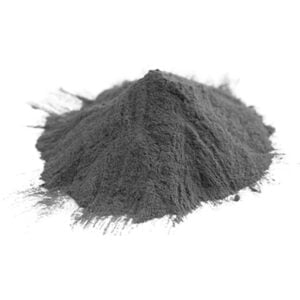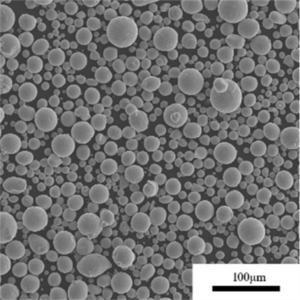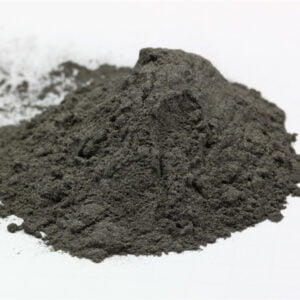Molybden-titanpulver
Innehållsförteckning
Översikt över molybdentitanpulver
molybden titanpulver hänvisar till fina metalliska partiklar av varje grundämne som produceras genom finfördelningsprocesser. De uppvisar hög hållfasthet, hårdhet och värmebeständighet.
Pulvren används individuellt eller som blandningar för tillverkning av högpresterande legeringar. Deras kontrollerade partikelstorleksfördelning gör att komplexa komponenter i nästan nätform kan byggas upp från lager under 3D-utskrift av metall.
Några nyckelegenskaper hos molybden- och titanpulver:
Molybdenpulver
- Utmärkt krypmotstånd och stabilitet vid höga temperaturer
- Låg värmeutvidgningskoefficient
- Hög hårdhet och slitstyrka
- Används som legeringstillsats för att stärka stål och superlegeringar
Titanpulver
- Extremt stark men ändå lätt som en strukturell metall
- Utmärkt korrosionsbeständighet
- Biokompatibel för medicinska implantat
- Reaktiv och kräver kontrollerad bearbetning
Blandade/legerade pulver
- Kombinera fördelaktiga egenskaper hos varje element
- Tillåter anpassad materialprestanda
- Kräver optimerade 3D-utskriftsparametrar
Genom att manipulera kompositioner genom AM kan innovativa legeringar med överlägsna egenskaper som lämpar sig för extrema miljöer skapas.
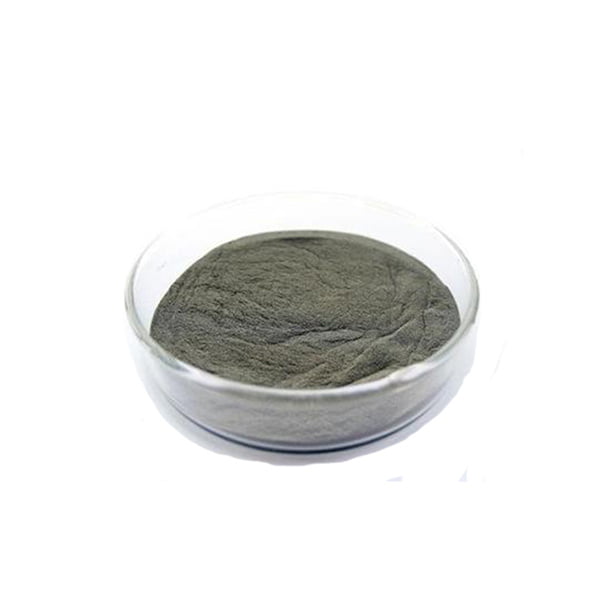
Typer av molybden- och titanpulver
Molybden- och titanpulver finns kommersiellt tillgängliga i olika typer för tillverkning av metalltillsatser:
| Pulvervariant | Egenskaper | Typiska användningsområden |
|---|---|---|
| Molybden | Rena och legerade kvaliteter | AM av molylegeringar, katalysatorer |
| Titan Ti-6Al-4V | Aerospace legering | Bärande aerostrukturer |
| Titan Ti-6Al-7Nb | Biokompatibel alfa-beta-legering | Medicinska implantat, proteser |
| Mo-Ti elementära blandningar | Anpassade legeringssammansättningar | Avancerade tekniska applikationer |
| Mo-Ti masterlegeringar | Förlegerade blandningar | Förenklad AM-bearbetning |
I sin elementära form ger molybden hårdhet vid hög temperatur medan titan bidrar med styrka och korrosionsbeständighet. Genom att kombinera båda genom AM kan innovativa legeringar skapas med förbättrad övergripande prestanda.
Sammansättning/legering
Molybden- och titanpulver har följande nominella sammansättningar:
Molybdenpulver
| Element | Sammansättning Range |
|---|---|
| Molybden (Mo) | 99% och uppåt |
| Syre (O) | 0,01% max |
| Kol (C) | 0,01% max |
| Järn (Fe) | 0,01% max |
| Andra metaller | 0,01% max |
Hög renhet krävs för reproducerbarhet under AM och nedströms bearbetning. Kontaminering kan påverka materialegenskaperna negativt.
Titan Ti-6Al-4V
| Element | Vikt % |
|---|---|
| Titan (Ti) | Balans |
| Aluminium (Al) | 5.5-6.75 |
| Vanadin (V) | 3.5-4.5 |
| Järn (Fe) | < 0,3 |
| Syre (O) | <0.2 |
| Andra metaller | <0.1 |
Små mängder legeringstillsatser av aluminium och vanadin förbättrar titanets styrka avsevärt för bärande lättviktskonstruktioner.
För blandade Mo-Ti-pulver kan de relativa förhållandena varieras från 100% Mo till 100% Ti för att skapa skräddarsydda legeringar. Genom att använda både elementära och förlegerade blandade pulver, tillåter den obegränsade friheten av kompositioner hittills outforskade legeringar att utvecklas genom AM.
Egenskaper för molybden titanpulver
Molybdenpulver
| Fysikaliska egenskaper | |
|---|---|
| Täthet | 10,22 g/cm3 |
| Smältpunkt | 2610°C |
| Termisk konduktivitet | 138 W/mK |
| Elektrisk resistivitet | 5,5 μΩ-cm |
| Koefficient för termisk expansion | 5,3 μm/m-°C |
| Mekaniska egenskaper | |
|---|---|
| Hårdhet | ~300 HV |
| Slutlig draghållfasthet | 600-800 MPa |
| Utbyteshållfasthet (0,2% offset) | 500+ MPa |
| Töjning | 30-50% |
| Elasticitetsmodul | 325 GPa |
Molybdenpulver gör att extremt hårda och värmebeständiga legeringar kan tillverkas med AM-tekniker. Delar bibehåller hög hållfasthet under oxiderande, korrosiva och friktionsförslitningsförhållanden vid förhöjda temperaturer över 1000°C.
Titan Ti-6Al-4V pulver
| Fysikaliska egenskaper | Värden |
|---|---|
| Täthet | 4,43 g/cm3 |
| Smältpunkt | 1604-1660°C |
| Termisk konduktivitet | 7,2 W/mK |
| Elektrisk resistivitet | 170 μΩ-cm |
| Coeff. av termisk expansion | 8,6 μm/m-°C |
| Mekaniska egenskaper | Som byggt | Glödgad |
|---|---|---|
| Draghållfasthet | 1050 MPa | 950 MPa |
| Utbyteshållfasthet (0,2% offset) | 900 MPa | 850 MPa |
| Töjning | ~15% | ~20% |
| Hårdhet | ~350 HV | ~300 HV |
Den fina balansen av hög hållfasthet tillsammans med anständig duktilitet gör detta till en extremt populär flyglegering för kritiska tryckta delar i raketmotorer, flygplan och turbiner.
Genom att blanda molybden och titanpulver i olika förhållanden kan en kombination av deras egenskaper realiseras i skräddarsydda legeringar.
Tillämpningar av molybden titan pulver
| Tillämpningsområde | Fastigheter med hävstångseffekt | Exempel |
|---|---|---|
| Flyg- och rymdindustrin samt försvar | Högt förhållande mellan styrka och vikt, utmärkt värmebeständighet | – Flygplansmotorkomponenter (skivor, blad) <br> – Missilhöljen – Värmesköldar |
| Biomedicinsk | Biokompatibel, bra korrosionsbeständighet, hög hållfasthet | – Ortopediska implantat (höftproteser, knäleder) – Tandimplantat – Kirurgiska instrument |
| Kemisk bearbetning | Korrosionsbeständighet, god bearbetbarhet | – Kemiska reaktorer och kärl – Värmeväxlare – Omröraraxlar |
| Elektronik & El | Hög elektrisk ledningsförmåga, bra termisk stabilitet | – Elektriska kontakter och kontakter – Högeffektmotstånd – Elektroder för elektrisk urladdningsbearbetning (EDM) |
| Additiv tillverkning | Skräddarsydda egenskaper, komplexa geometrier möjliga | – Lättviktskomponenter med hög prestanda för flyg- och bilindustrin – Biokompatibla implantat med skräddarsydda strukturer – Komplexa värmeväxlare för effektiv värmehantering |
Specifikationer för molybdentitanpulver
Molybden- och titanpulver måste uppfylla exakta kemikrav och strikta kvalitetsspecifikationer för användning av additiv tillverkning enligt industrigodkända standarder:
Kemiska renhetsstandarder
| Pulverkvalitet | Standard |
|---|---|
| Molybden | ASTM B393 |
| Titan Ti-6Al-4V | ASTM F2924 |
| Titan Ti-6Al-7Nb | ASTM F3001 |
Typiska pulveregenskaper
| Attribut | Krav och önskemål | Testmetoder |
|---|---|---|
| Partikelns form | Övervägande sfärisk | SEM-avbildning enligt ASTM B822 |
| Skenbar densitet | 2 till 5 g/cc | MPIF 04 eller ASTM B212 |
| Flödeshastighet | >30 sek för Hall-flödestest | ASTM B213 |
| Fördelning av partikelstorlek | D10, D50, D90 optimerade för AM-process | ASTM B822 |
| Förlust vid antändning (LOI) | Lågt syre/kväve | Fusionsanalys med inert gas |
| Mikrostruktur | Felfri, inga satelliter | SEM vid höga förstoringar |
Kraven syftar till att säkerställa enhetligt smältbeteende, defektfria konstruktioner och reproducerbara änddelars egenskaper.
Globala leverantörer
Många etablerade tillverkare tillhandahåller molybden- och titanpulver för AM-applikationer:
Molybdenpulver
| Företag | Varumärken | Produktionsmetod |
|---|---|---|
| H.C. Starck | Mo | Elektrolytisk |
| Molymet | PureMo | Vätgasreduktion |
| Plansee | MolyPowder | Kalciumreduktion |
| Midwest Tungsten | TeroMoly | Kalciumreduktion |
Titanpulver
| Företag | Erbjudna årskurser | Produktionsmetoder |
|---|---|---|
| AP&C | Ti-6Al-4V, Andra Ti-legeringar | Plasmaatomisering |
| Snickare Tillsats | Ti-6Al-4V | Plasmaatomisering |
| Sandvik | Ti6Al4V ELI, Ti6Al4V ELI-0406 | Plasmaatomisering |
| Tekna | Ti-6Al-4V, Ti 6Al-7Nb | Plasmaatomisering |
| TLS Teknik | Ti6Al4V, Ti6Al4V ELI, Ti Grade 23 | Gas, plasmaatomisering |
Både etablerade metallpulvertillverkare såväl som specialiserade AM-pulvertillverkare tillhandahåller dessa material till krävande industrispecifikationer.
Prissättning av molybden titanpulver
Som allmänt använda material i metall AM finns publicerade prisindikatorer för molybden- och titanpulver tillgängliga:
Molybdenpulver
| Partikelstorlek | Prisintervall |
|---|---|
| 10-45 μm | $40 – $60 per kg |
| 15-53 μm | $50 – $70 per kg |
| Anpassade storlekar | > $100 per kg |
Titan Ti-6Al-4V pulver
| Partikelstorlek | Prisintervall |
|---|---|
| 15-45 μm | $150 – $450 per kg |
| 45-100 μm | $100 – $350 per kg |
| Anpassade storlekar | > $500 per kg |
Priserna beror på kvalitetsklass, partistorlek, distributionsintervall, plasma vs gasatomisering och inköpsvolym. Stora kvantiteter och kontraktspriser förhandlas vanligtvis direkt med leverantörer.
För- och nackdelar med molybden och titanlegeringar från AM
| Funktion | Molybdenlegeringar (AM) | Titanlegeringar (AM) |
|---|---|---|
| Styrka | Mycket hög hållfasthet och krypmotstånd vid förhöjda temperaturer. Idealisk för högpresterande applikationer inom flyg- och energisektorerna. | Utmärkt styrka-till-vikt-förhållande. Lättare än stål men erbjuder jämförbar styrka, vilket gör dem värdefulla inom flyg-, bil- och biomedicinska områden. |
| Vikt | Relativt tät jämfört med titan, men ändå lättare än många andra högpresterande metaller. | Betydligt lättare än stål, vilket ger betydande viktminskningsfördelar i applikationer där vikten är kritisk. |
| Motståndskraft mot korrosion | Generellt god korrosionsbeständighet, speciellt i reducerande miljöer. Kan dock vara känslig för oxidation vid höga temperaturer. | Enastående korrosionsbeständighet i olika miljöer, inklusive havsvatten och mänskliga kroppsvätskor. Ett föredraget material för marina applikationer och biomedicinska implantat. |
| Biokompatibilitet | Begränsad biokompatibilitet på grund av potentiell frisättning av molybdenjoner i kroppen. Inte idealiskt för de flesta medicinska implantat. | Utmärkt biokompatibilitet, vilket gör dem väl lämpade för implantat och proteser. |
| Prestanda vid höga temperaturer | Bibehåller styrka och krypmotstånd vid höga temperaturer, vilket möjliggör användning i heta delar av jetmotorer och andra extrema miljöer. | Kan bibehålla goda mekaniska egenskaper vid förhöjda temperaturer, men inte i samma utsträckning som molybdenlegeringar. |
| Termisk konduktivitet | Mycket god värmeledningsförmåga, vilket möjliggör effektiv värmeavledning i högtemperaturapplikationer. | Måttlig värmeledningsförmåga, lägre än molybden men tillräcklig för många applikationer. |
| Additive Manufacturing (AM) Tryckbarhet | Molybdenpulver kan vara utmanande att bearbeta på grund av dess höga smältpunkt och reaktivitet. Kräver specialiserade AM-tekniker som EBM (Electron Beam Melting). | Lättare att skriva ut med olika AM-tekniker som selektiv lasersmältning (SLM) och EBM (Electron Beam Melting). Pulveregenskaper och tryckbarhet kan variera beroende på den specifika titanlegeringen. |
| Kostnad | Molybden är ett relativt rikligt grundämne, men AM-processen kan vara dyr på grund av specialiserad utrustning och hanteringskrav. | Titan i sig är ett dyrare grundämne än molybden. Men framsteg inom AM-teknik sänker kostnaderna för titandelar. |
| Ytfinish | AM-producerade molybdendelar kan ha en grov ytfinish, vilket kräver ytterligare efterbearbetningssteg. | AM titandelar kan uppnå en bra ytfinish beroende på den specifika AM-processen och parametrarna som används. |
| Tillämpningar | – Högtemperaturkomponenter i jetmotorer och raketmotorer – Värmeväxlare – Molybdendeglar för högtemperatursmältningsprocesser | – Flygkomponenter (flygplansdelar, landningsställ) – Biomedicinska implantat (knäproteser, höftleder) – Fordonsdelar (vevstakar, upphängningskomponenter) – Sportartiklar (golfklubbor, cykelramar) |
Hur tillverkas molybden- och titanpulver?
Avancerade gasatomiseringsprocesser tillverkar de fina metalliska pulvren med exakt kontroll över kritiska egenskaper som partikelform, storleksintervall och kemisk renhet.
Atomisering av gas
Högren göt induktionssmälts i en inert atmosfär och den flytande metallströmmen hälls i specialiserade finfördelningskärl. Kraftfulla argon- eller kvävgasstrålar finfördelar metallen till fina droppar som snabbt stelnar till pulver.
Genom att optimera gasflödesparametrar och kylningshastigheter erhålls sfäriska partiklar med önskad partikelstorleksfördelning. Pulvret siktas sedan till olika storleksklassificeringar som krävs för olika AM-processer.
Ytterligare bearbetning
Ytterligare steg kan vidtas för att förbättra pulveregenskaperna – avgasning för att sänka syrenivåer, glödgning för att minska inre spänningar från snabb stelning och blandning med andra pulverfraktioner för att erhålla specifika storleksintervall.
Pulvren förpackas slutligen under inerta atmosfärer för att förhindra oxidation innan de skickas till kunderna. Hanterings- och lagringsprotokoll förhindrar fuktabsorption eller kontaminering under nedströms metall AM-bearbetning.
Binder Jetting vs. Powder Bed Fusion av molybden och titan
Molybden och titanlegeringar kan tryckas med både bindemedelssprutning och pulverbäddsfusionskategorier:
| Aspekt | Binder Jetting | Fusion av pulverbäddar |
|---|---|---|
| Byggmetod | Flytande bindemedel | Laser/e-beam smältning |
| Upplösning | ~100 μm | ~50 μm |
| Porositet | Högre, kräver infiltration | Lägre, 99%+ densitet |
| Ytfinish | Grovt, behöver bearbetas | Måttlig, kan behöva efterbehandling |
| Mekaniska egenskaper | Låg, varierar genom del | Högre, mer enhetlig |
| Dimensionell noggrannhet | ±0,3% med krympning | ±0,1% eller bättre |
| Efterbearbetning | Avbindning, sintring, HIP | Stödborttagning, värmebehandling |
| Byggstorlek | Industriell skala | Mindre kammare |
| Tidskrav | Dagar | Timmar upp till 1-2 dagar |
| Ekonomi | Lägre delkostnad, högre volym | Lägre volym, dyr hårdvara |
Binder jetting är lämplig för designkonceptmodeller på grund av hastighet och låg kostnad. Pulverbäddsfusion skapar högtrogna slutanvändningsdelar med överlägsna egenskaper.
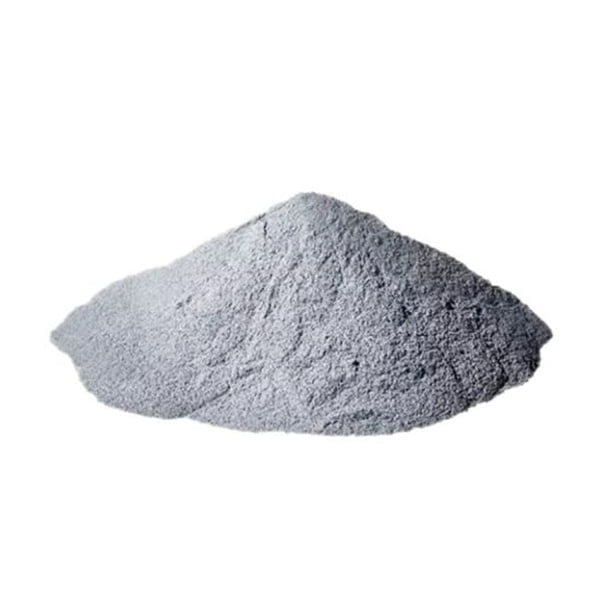
Molybden titanlegeringar – framtidsutsikter
| Funktion | Beskrivning | Fördelar | Potentiella utmaningar |
|---|---|---|---|
| Överlägsna mekaniska egenskaper | Molybden (Mo) stärker titan (Ti), skapar legeringar med exceptionellt hållfasthet-till-vikt-förhållande, hög krypmotstånd (motstånd mot deformation under stress vid höga temperaturer) och god utmattningshållfasthet (motstånd mot brott under cyklisk belastning). | – Idealisk för applikationer som kräver lätta men robusta komponenter, särskilt vid höga temperaturer. – Möjliggör effektiva konstruktioner tack vare mindre material som behövs för samma styrka jämfört med tyngre alternativ. | – Molybdentillsats kan minska legeringens duktilitet (förmåga att deformeras plastiskt), vilket potentiellt begränsar dess formbarhet för komplexa former. – Bearbetningen av dessa legeringar kan vara komplex och kräva specialiserade tekniker, vilket kan påverka kostnadseffektiviteten. |
| Förbättrad prestanda vid hög temperatur | Molybdens höga smältpunkt höjer den maximala driftstemperaturen för Ti-Mo-legeringar jämfört med olegerat titan. | – Möjliggör användning av dem i miljöer med extrem värme, såsom jetmotorer, raketkomponenter och högpresterande ugnar. – Ger utökad komponentlivslängd i krävande termiska applikationer. | – Oxidationsbeständighet, förmågan att motstå att reagera med syre vid höga temperaturer, kan vara ett problem för vissa Ti-Mo-legeringar. Forskning pågår för att förbättra deras oxidationsbeteende genom legeringstillsatser eller ytbehandlingar. |
| Tillämpningar för elektrisk ledningsförmåga | Vissa Ti-Mo-legeringar, särskilt de med en högre Mo-halt, uppvisar god elektrisk ledningsförmåga. | – Användbar för applikationer som kräver elektrisk strömöverföring, såsom elektroder, elektriska kontakter och högeffektmotstånd. – Erbjuder ett potentiellt materialalternativ till traditionella ledare som koppar i specifika scenarier. | – Den elektriska ledningsförmågan hos Ti-Mo-legeringar kanske inte alltid matchar den för ren koppar, vilket kräver noggrant materialval baserat på den specifika applikationens behov. – Spröd beteende vid låga temperaturer kan begränsa deras användning i kryogena applikationer. |
| Framväxande additiv tillverkningspotential | Utvecklingen av Ti-Mo-legeringspulver som är kompatibla med additiv tillverkningsteknik som 3D-utskrift öppnar nya möjligheter för komplex komponentdesign och lätta strukturer. | – Möjliggör skapandet av invecklade geometrier och gitterstrukturer, vilket potentiellt leder till viktminskning och förbättrad prestanda. – Erbjuder större designfrihet jämfört med traditionella tillverkningsmetoder. | – Pulverproduktion och tryckbarhetsoptimering för Ti-Mo-legeringar är pågående forskningsområden. – Att säkerställa konsekventa materialegenskaper och kvalitetskontroll genom hela den additiv tillverkningsprocessen kräver vidareutveckling. |
| Marknadstillväxt och utveckling | Den globala marknaden för Ti-Mo-legeringar förväntas uppleva en stadig tillväxt på grund av ökande efterfrågan inom flyg-, biomedicin- och energisektorerna. | – Stigande efterfrågan på lätta och högpresterande material i dessa industrier driver på marknadens expansion. – Tekniska framsteg inom bearbetning och produktionsmetoder kan ytterligare förbättra kostnadseffektiviteten och bredda tillämpningspotentialen. | – Konkurrens från etablerade material som aluminium och högpresterande stål kan begränsa marknadsandelar inom vissa sektorer. – Fluktuationer i priserna på molybden och titan kan påverka den totala kostnaden för Ti-Mo-legeringar. |
Vanliga frågor
F: Vad används molybden till?
S: Med utmärkta högtemperaturegenskaper ser molybden stor användning som ett legeringstillskott för att stärka värmebeständiga stål och superlegeringar som används inom rymd, kraftgenerering, ugnskonstruktion, missilkomponenter bland andra krävande applikationer.
F: Är molybden giftigt?
S: Elementärt molybden och dess legeringar har i allmänhet låga toxicitetsnivåer och är säkra för teknisk användning. Emellertid kan vissa molybdenföreningar vid inandning under lång tid ha potentiella cancerogena effekter som motiverar användning av skyddsutrustning under hantering och bearbetning.
F: Är titan dyrt?
S: Titanlegeringar uppvisar en högre råmaterialkostnad jämfört med stål och aluminiumlegeringar. Men med köp-till-flyg-förhållanden som närmar sig 1 för AM-tillverkning, kan kostnader för färdiga titandelar vara ekonomiska för industrier som flygindustrin som är villiga att ta till sig ny teknik och design.
F: Vad gör titan idealiskt för implantat?
S: Biokompatibiliteten hos titanlegeringar i kombination med deras höga styrka-till-vikt-förhållande gör dem idealiska för att ersätta mänskligt ben. Elasticitetsmodulen kan reduceras närmare benets genom legering med biokompatibla betastabilisatorer som Nb och Ta för förbättrad livslängd för bärande implantat.
F: Vilken 3D-utskriftsprocess används för molybden och titan?
S: För högpresterande slutanvändningsdelar används främst pulverbäddsfusionstekniker som selektiv lasersmältning (SLM) och elektronstrålesmältning (EBM). Värmekällan med hög temperatur uppnår nästan full densitet med överlägsna egenskaper lämpade för tekniska tillämpningar.
F: Varför blanda molybden med titanpulver?
S: Molybden förbättrar hårdhet vid hög temperatur, krypmotstånd och verktygsstålliknande egenskaper medan titan bidrar med utmärkt korrosionsbeständighet och lågdensitetsegenskaper. Tillsammans ger skräddarsydda legeringar gjorda genom att direkt blanda deras pulver med AM den idealiska kombinationen för avancerade applikationer.
Dela på
MET3DP Technology Co, LTD är en ledande leverantör av lösningar för additiv tillverkning med huvudkontor i Qingdao, Kina. Vårt företag är specialiserat på 3D-utskriftsutrustning och högpresterande metallpulver för industriella tillämpningar.
Förfrågan för att få bästa pris och anpassad lösning för ditt företag!
Relaterade artiklar

Högpresterande segment för munstycksvingar: Revolutionerande turbineffektivitet med 3D-utskrift i metall
Läs mer "Om Met3DP
Senaste uppdateringen
Vår produkt
KONTAKTA OSS
Har du några frågor? Skicka oss meddelande nu! Vi kommer att betjäna din begäran med ett helt team efter att ha fått ditt meddelande.

Metallpulver för 3D-printing och additiv tillverkning
FÖRETAG
PRODUKT
cONTACT INFO
- Qingdao City, Shandong, Kina
- [email protected]
- [email protected]
- +86 19116340731







